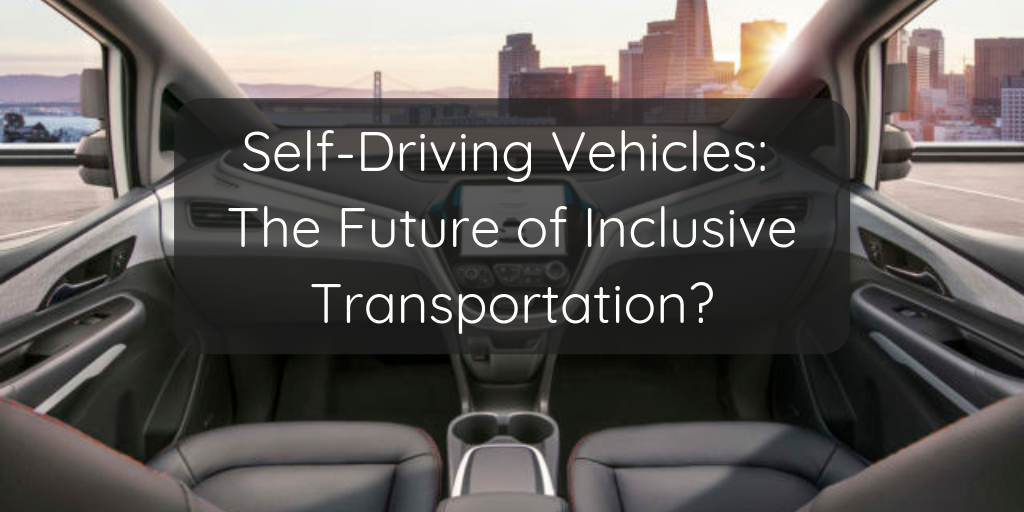
By CEO Deb Taylor
Autonomous, or self-driving, vehicle technology has been dominating the conversation surrounding the future of transportation infrastructure in our country. This often evokes images of a fleet of driverless cars and buses conveniently available for efficient transportation, free from user-error. While the most common concern raised in these discussions is the safety and intelligence these new technologies will be able to offer, it seems the question of accessibility is often left out of the equation.
For populations like seniors and those with disabilities, transportation can be a huge barrier for independence and thus quality of life. Being unable or fearful to drive limits access to food, medicine and health care, not to mention the mental health effects social isolation can have on an individual. The US Department of Transportation reports 42% of all Americans living with a disability have self-reported travel-limiting disabilities. While the Surface Transportation Policy found that 20% of Americans over 65 do not drive at all.
One of the more exciting aspects of autonomous vehicle technology is the greater sense of freedom and independence it could offer these populations. Instead of always having to rely on family members and caregivers, those unable to operate a car would now have access to door-to-door, automated transportation services. These cutting-edge vehicles would be able to accelerate, turn, brake and perform all the other functions of driving without any user direction, making them ideal for those who can’t operate a car.
But perfecting the technology doesn’t mean it will be widely accessible. In this case “accessibility” means a number of different things including:
- Providing affordable autonomous ride services to seniors and disabled individuals who may be on a fixed income.
- Accommodating the transportation of passengers who need to use mobility aids and walking devices to get around, or those who travel with medical devices.
- Being available to those in more rural locales and other areas poorly served by current mass transit infrastructure.
One in five Americans live with a disability, and our aging population is growing at rate that by next year there will be more Minnesotans over 65 than school-aged children. In order for vast proportions of our population to benefit from emerging technologies, these are the issues that need to be raised in discussions with designers, automakers and federal regulators.
“A large majority of transportation, city, county and other similar type planners are younger and able-bodied and design systems for similar type of people.” says Courtney Whited, a Grants Specialist Senior for The Minnesota Department of Human Services in their Aging and Adult Services Division. “I urge all people to support the concept of Universal Design Principles, which include equitable use, flexibility in use, perceptible information, tolerance for error, low physical effort, and appropriate size and space for use.”
There’s no doubt that technologies such as autonomous vehicles have the potential to provide even more people with significantly more independence and wellbeing in their lives, but it will require proper planning, research, and discussion on our part and the part of industry leaders to make sure that’s a reality for millions of Americans.
Ms. Whited will continue this discussion as part of a dynamic panel discussion at the 4th Annual Reimagine Aging Conference this October 3rd in Golden Valley, MN. Other panelists include representatives from The Minnesota Department of Transportation and Mobility4All, a ride sharing service designed with accessibility in mind. The purpose of this conference is to raise awareness and educate people on the growing and changing needs of our older adult population, and the adaptive technology being developed to meet these needs. The conference is open to anyone interested in being part of the conversation surrounding how older adults can live a high-quality, independent life through the use of accessible technology. Learn more about this year’s tech conference by clicking here.
In an era where we are constantly striving towards creating a future with more social equity, equality in the way we are implementing technological advancements is just as important as any social change. After all, an inclusive community doesn’t mean much if you’re not actually able to participate in the community.



